We had heard many stories of the Parvati Valley and had mixed feelings about visiting. The stories were of tourists who were missing or murdered either by people in the local drug trade or on the rugged mountain trails. But we also heard of beautiful, lush valleys with stunning views. In the end we decided to see what it is all about. What we found was that Parvati Valley, the hashish and marijuana capital of India, has some of the most unusual places.
We trekked from the village of Naggar in the Kullu Valley, over the Chanderkhani Pass to reach Malana village in the Parvati Valley. There is an old castle in Naggar that was built by a Raja in the 1400s and sold to a British Commissioner in the 1800s for a gun.

Hindu Temple, Naggar, Himachal Pradesh

Naggar Castle, Himachal Pradesh
The trek from Naggar to Rumsu was a short 1 ½ hours, but we gained 450m in elevation ending high on the hill above the Beas River. We found a cute guesthouse in an apple orchard that gave us great views of the Kullu Valley. It was apple season so we had plenty of free delicious apples. The guesthouse owner’s brother showed us to the guest house and spent the afternoon hanging out with us. He didn’t speak much English and chain smoked at least 10 joints during the afternoon. The conversation was limited due to the language barrier, and the stories became stranger and stranger throughout the day from the amount of pot he smoked. It was a good preview for our excursion to Parvati Valley.

Rumsu Village, Himachal Pradesh

Kullu Valley as seen from Rumsu, Himachal Pradesh

Kullu Valley as seen from Rumsu, Himachal Pradesh
On the second day, the trek was much more difficult. We hiked straight up a steep hill through the apple orchard until we found the trekking trail. We then climbed and climbed past apple trees, then fir, pine and chestnut trees until we finally reached a clearing where we could see the mountain ridge above.

View above Rumsu, Himachal Pradesh

Mountain ridge on the Naggar to Malana Trek
After 4 hours and 1350m of climbing, we reached the rugged mountain ridge. From the ridge we had beautiful views of the steep gullies that went straight down to the bottom of the Parvati Valley on the other side. The trail continued along this rugged rocky mountain ridge for 4 km passing many deep, rocky gorges.

Mountain gully on the Naggar to Malana Trek

Mountain Ridge on the Naggar to Malana Trek

Mountain ridge on the Naggar to Malana Trek

Rugged gully on the Naggar to Malana Trek

Mountain ridge on the Naggar to Malana Trek

Mountain ridge on the Naggar to Malana Trek
As we approached an open plateau, the clouds started to come in. In the middle of the misty clouds we found a strange Stonehenge style shrine. The stones were set in a circle decorated with colourful scarves. Around these was another circle of stones, stood on end like gravestones. The incoming clouds made it a very eerie place.

Eerie shrine on Naggar to Malana Trek

Eerie shrine on Naggar to Malana Trek

Mountain ridge on Naggar to Malana Trek

Rugged gully on the Naggar to Malana Trek
Not long after the shrine we started our incredibly steep, treacherous descent. It was a knee jarring 900m descent in only 2 ½ km. The trail was overgrown with bushes and grass and the ground was mostly loose rocks. We could imagine how trekkers who had accidents here may not be found for weeks. Finally, we could see the isolated village of Malana. In the final 100m before the village, the vegetation changed. Instead of the alpine bushes, the main crop was marijuana. It was everywhere. Huge plants were taking over the mountain side.

Our descent gully from Chanderkhani Pass

Marijuana plants near Malana, Himachal Pradesh

Malana Village, Himachal Pradesh

Malana Village, Himachal Pradesh

Malana Village, Himachal Pradesh
It rains 300 days a year in the Parvati Valley and this combined with the soil and elevation ensures huge marijuana crops every year. In fact, the main industry in this area is Malana Cream (hashish) which is considered among the highest quality in the world.
In contrast to their major revenue source, Malana is a very conservative and religious community. They worship a pre-Hindu deity called Jamlu who established rules and regulations when he arrived in the area. These archaic laws are still strictly adhered to today. Malana has been secluded for centuries and has maintained most of their ancient customs. The Temple is a little different from other old Hindu Temples. It has intricate carvings of elephants and horses on the exterior and has stuffed deer heads and animal horns on the walls.

Jamlu Devta Temple

Jamlu Devta Temple
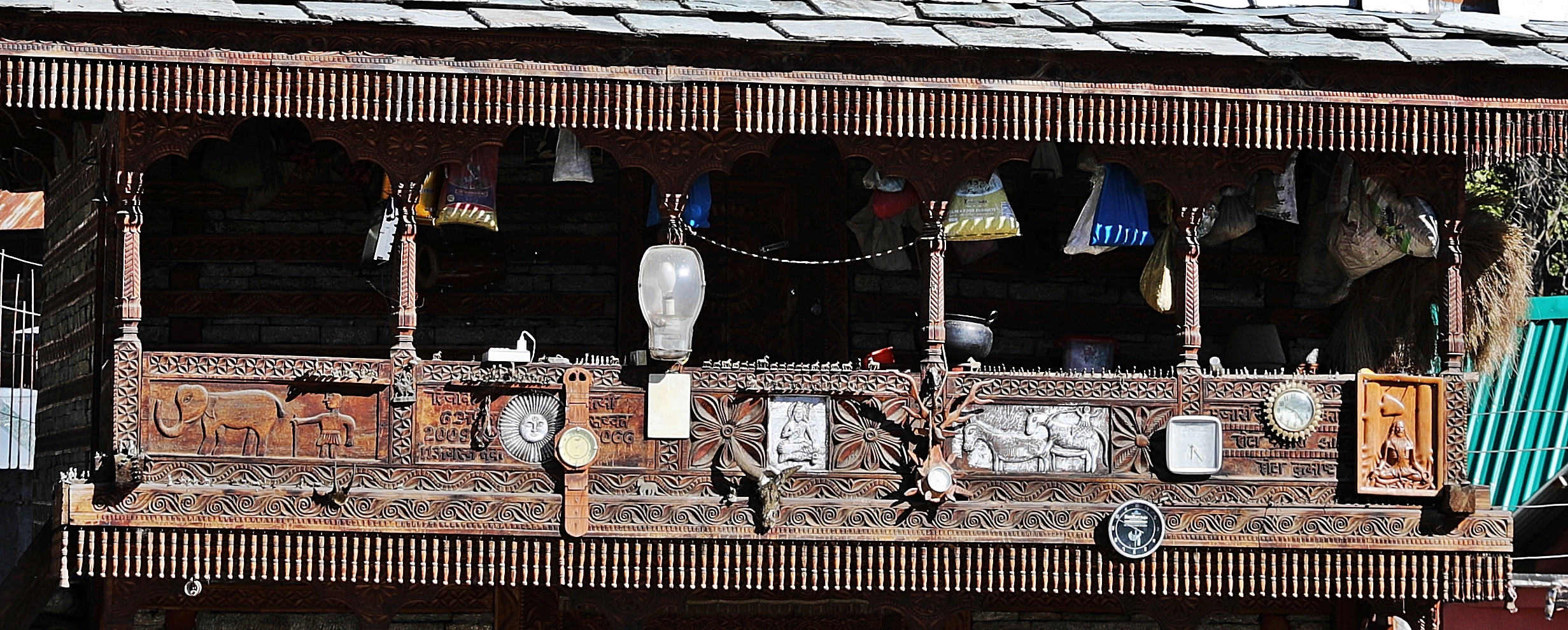
Jamlu Devta Temple
The town is self-governed under a local council, led by an Oracle of Jamlu. The Oracle conveys the deity’s opinions to the council. Included in their ancient beliefs is that anyone from outside is ‘unclean’. ‘Unclean’ visitors are not allowed to touch anything including buildings, animals, people and especially the temple. There is a 2,000Rs ($40 CDN) fine for those who don’t adhere. We were not even allowed to step off the main path. As we walked through town we were prevented from getting any closer than 50m from Jamlu Devta Temple and prohibited from going into the lower part of town. Malana residents walking near us would shrug away so as not to be accidentally touched. We walked through town with our hands in our pockets for fear of touching something. We purchased drinks from a small store but weren’t allowed to approach the store. We had to call out our order from the path, leave money on the step in front, then the shopkeeper put our drinks and change on the sidewalk and walked away.

Shopping in Malana, Himachal Pradesh
The irony is that it is one of the filthiest, most polluted towns we’ve seen in India. There are plastics, wrappers, discarded clothing and food waste in every square inch. The smell of animal feces in the village is overwhelming. The people look as if they haven’t bathed in the last year and the homes in Malana are as rundown and dirty as we have seen anywhere. And we are unclean!
‘Do you want cream?’ they asked. ‘No’ we replied… again and again and again. The locals will constantly try to sell you Malana Cream but this is the only contact they want with ‘unclean’ visitors.

Malana Village, Himachal Pradesh
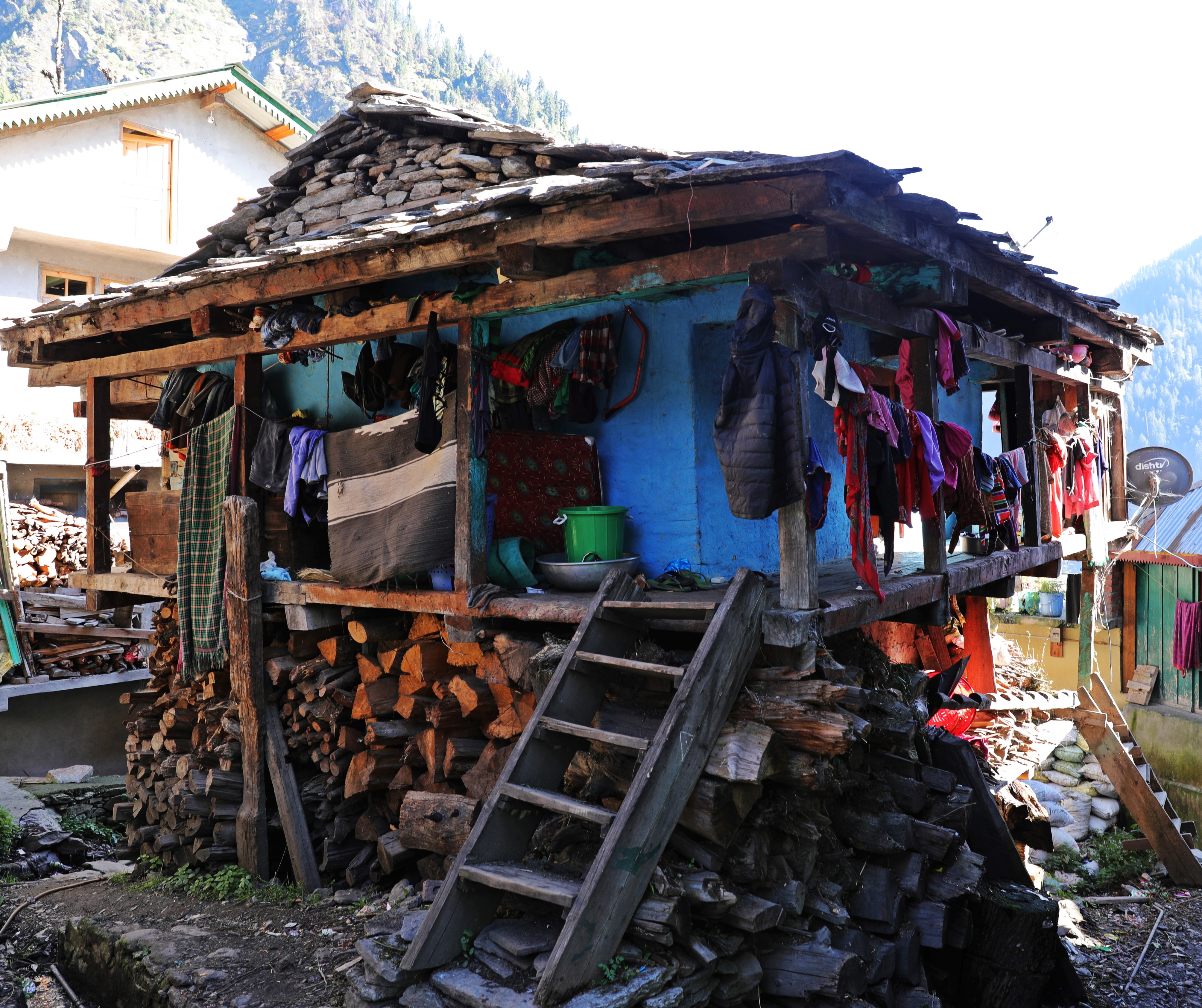
Malana Village, Himachal Pradesh

Malana village, Himachal Pradesh

Malana village, Himachal Pradesh
On our way out of Malana we were treated to stunning views of the area and met a Sadhu picking marijuana buds on the slopes. Further down the valley, we had to walk over a massive landslide that was being cleaned up. This is a frequent occurrence in Himachal Pradesh.
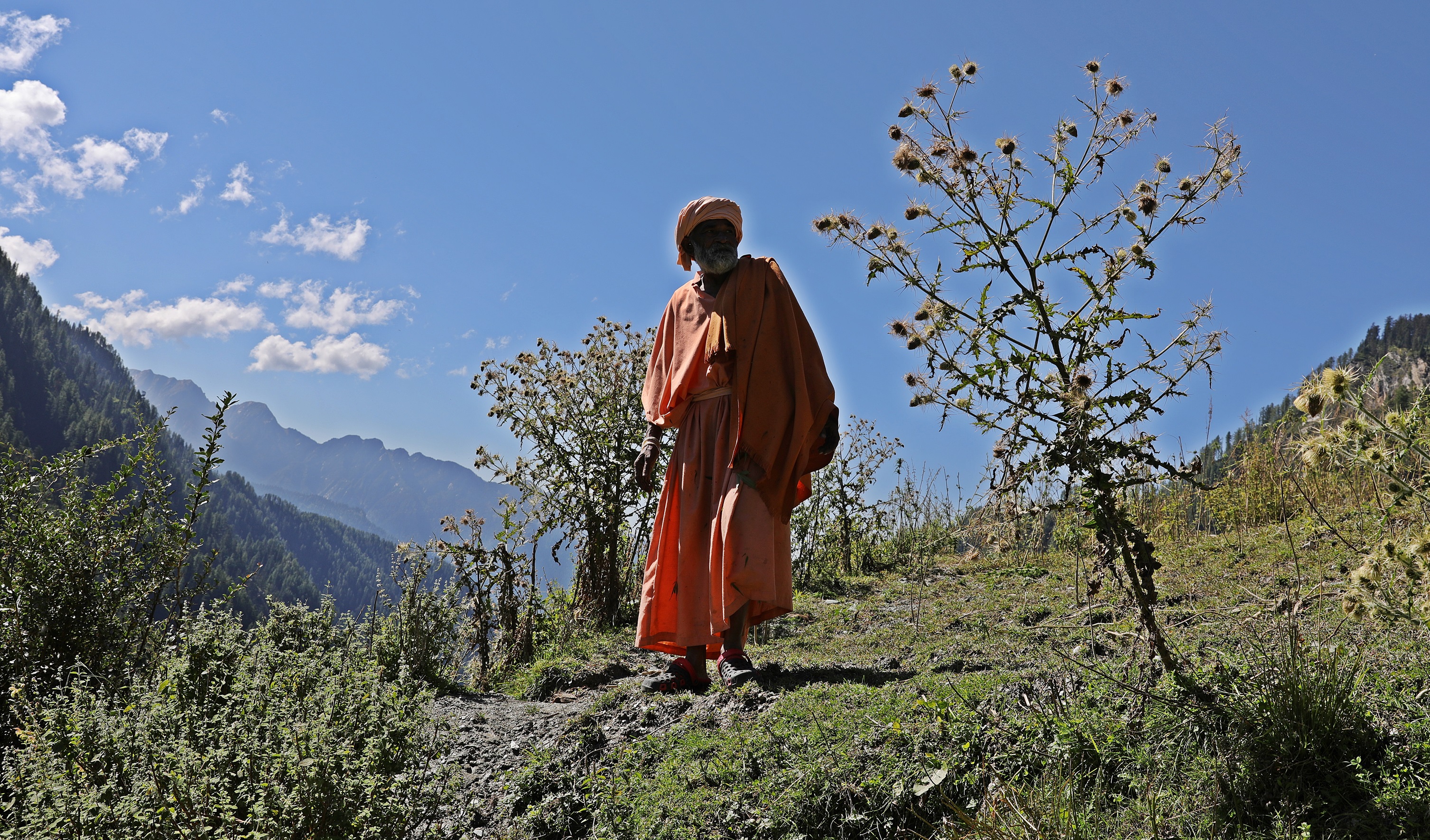
A Sadhu picking marijuana buds near Malana, Himachal Pradesh

Shrine, Malana, Himachal Pradesh

Shrine, Malana, Himachal Pradesh
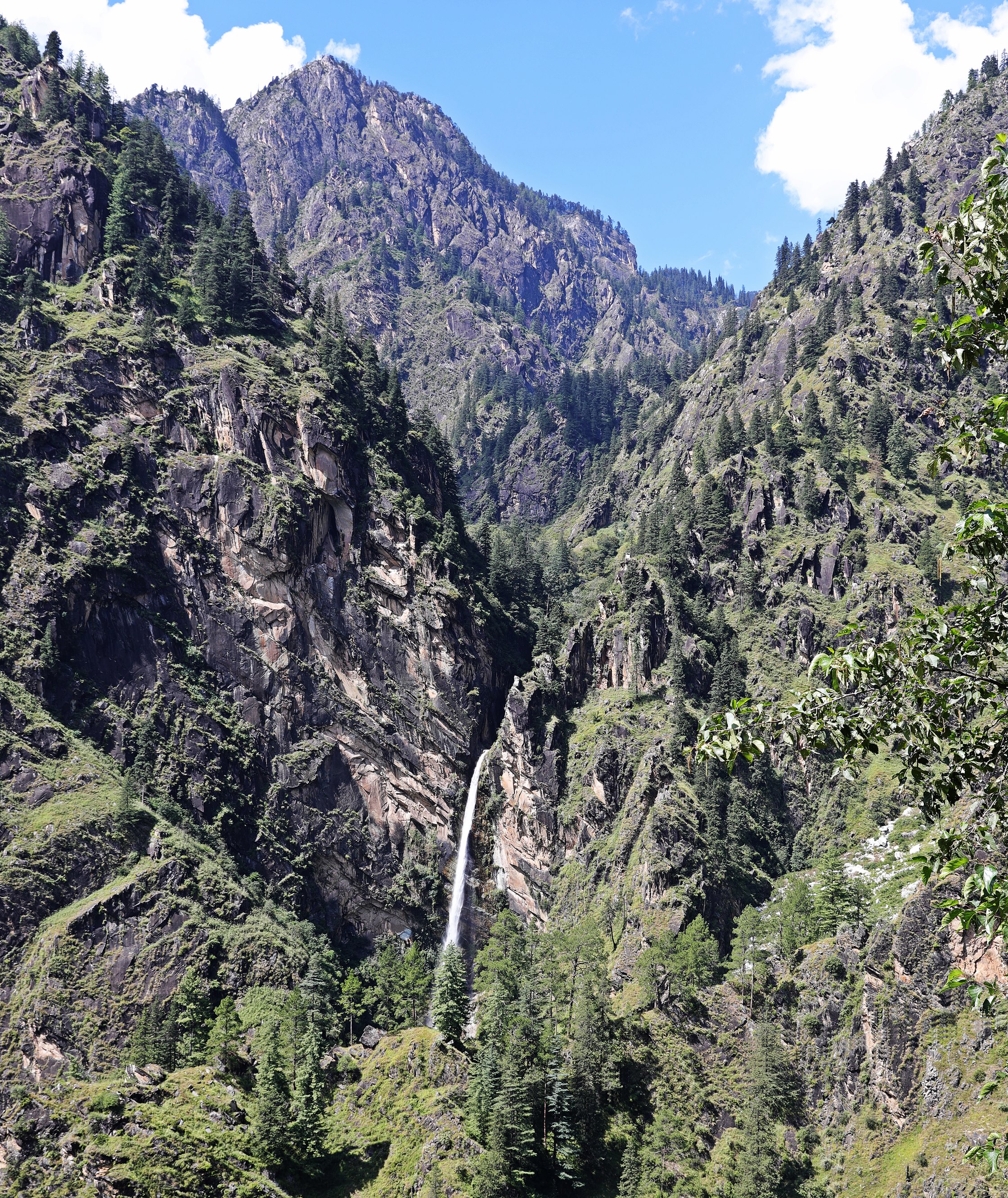
Waterfall view from Malana village

View from Malana, Himachal Pradesh

Typical mountain highway in Himachal Pradesh

Rock slide covering the road, near Malana, Himachal Pradesh
After Malana we visited the much larger centre of Manikaran. It is a very important area in Hindu mythology. The legend goes that Parvati was bathing here during her 1,100-year meditation. A snake stole her earrings and spit them out at this site to create thermal hot springs. An important Sikh Guru also came to the area in the 1500s. There is a legend about the guru discovering the thermal activity when he was trying to cook food for his followers. Both Hindus and Sikhs come to Manikaran to visit the important temples and soak in the hot springs. There are separate public baths for men and for women. Even though they are separate, women still bathe fully clothed.

Parvati River, Manikaran

Parvati River with a rocky shore, Manikaran

Hot springs steam rising beside the Hindu Temple, Manikaran

Sikh Gurudwara, Manikaran

Hot springs steam rising beside the Hindu Temple and Sikh Gurudwara, Manikaran
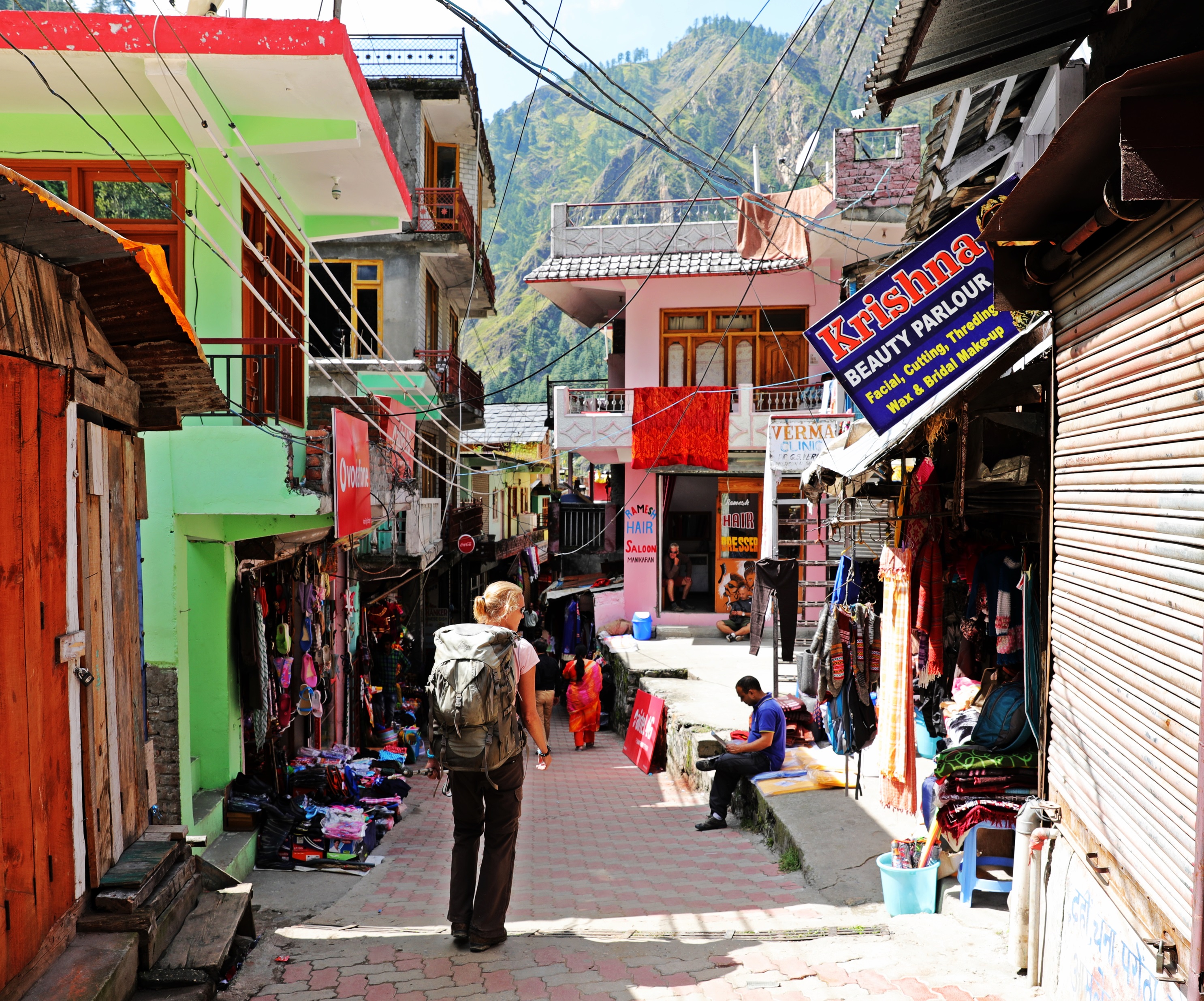
Downtown Manikaran
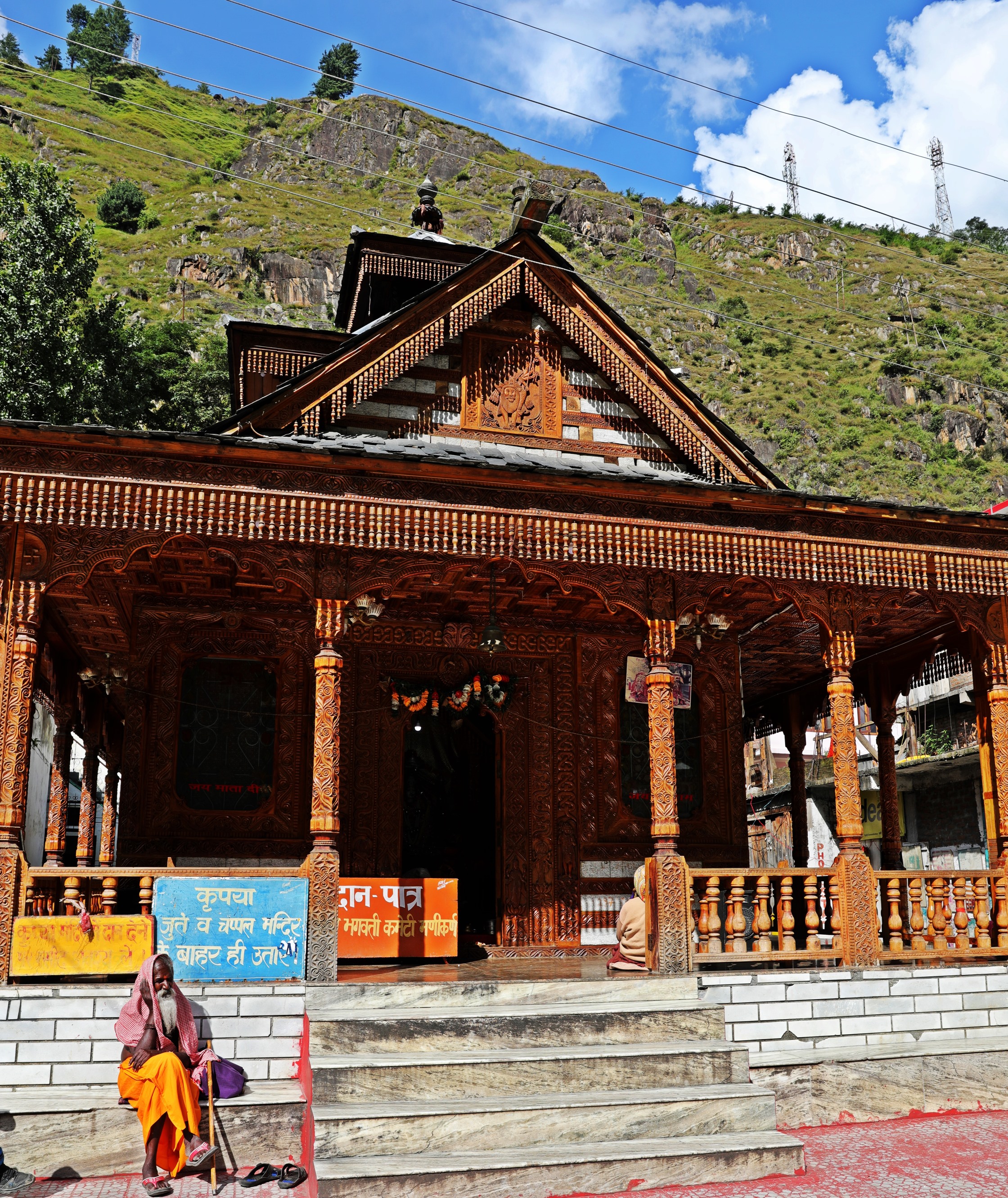
Sadhu outside a Hindu Temple, Manikaran
Tosh is a small hippie village just off the Parvati Valley along the Tosh river. Tosh has an incredible setting, high on the hills with gorgeous mountain views. The town though is not really a town at all. It is composed of budget guesthouses for the young, mostly Israeli, tourists who come to the valley for the pot. In fact, most of the Parvati Valley is set up for recreational drug tourism. As we walked through Tosh, we noticed the constant aroma of pot. We were probably the only tourists in the area not partaking.

Confluence of Tosh and Parvati Rivers

Tosh village, Himachal Pradesh

Mountains around Tosh, Himachal Prades

Mountains near Tosh, Himachal Pradesh

Tosh Village, Himachal Pradesh

Mountains around Tosh, Himachal Pradesh
Coming up next: The Foothill towns of Shimla and Rewalsar
For extra pics from this trip go to Gallery/Northern India. For extra pictures from other blogs go to Gallery at monkeystale.ca
To read about more of our adventures go to Destinations.
If you like what you read, please share it using the links below.
Beautiful. Although some of those landscapes look almost Scottish!
LikeLiked by 1 person
It’s not the landscape we expected in India either!
LikeLike
Such is the joy of travel! I have never seen temples like that on the Isle of Skye, though…!
LikeLiked by 1 person
Amazing travels! Great to hear your safe with your adventure.
LikeLiked by 1 person
Thanks!
LikeLike